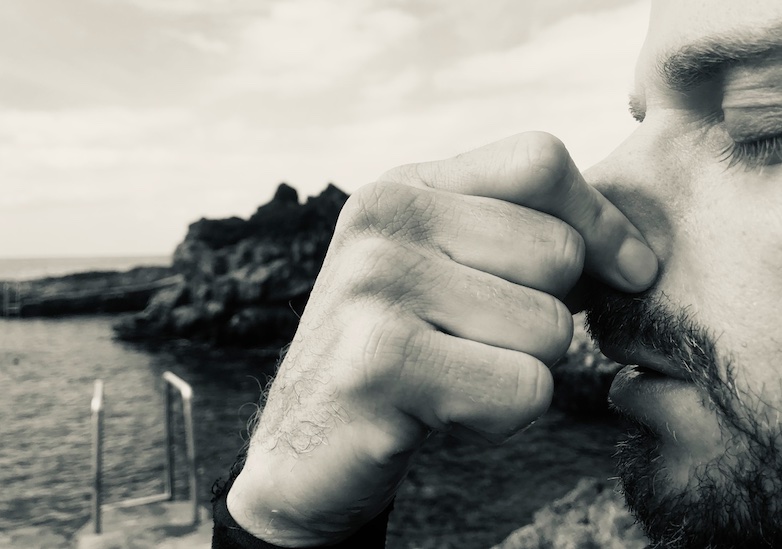With this first post on equalization we begin a series of articles in which we will be explaining this concept, undoubtedly one of the most important when practicing freediving.
What do we call equalizing the ears?
Ear equalization is balancing the pressure inside the airspace in our ears with the pressure around our ears. On the surface there is nothing to balance, unless we change altitude a lot, as when we go to the mountains, where sometimes we feel a slight discomfort that makes it necessary to balance that small change in pressure. This is also what happens when we are inside airplanes.
But why does that happen? why does a pressure change make us feel that need? Here comes into play what we usually call the physics of diving, to which we give so much importance working as freediving instructors in El Hierro. It is one of the first concepts to be studied in the diving world. In this article we are not going to go in depth with the physics, we will only say that when there is an increase in external pressure (either descending from the mountain, descending in the plane or increasing the depth when diving), there is a decrease in the volume of any air space. This, in our ears, causes the eardrum to sag as the space decreases in volume, making it necessary to balance the pressures so that the eardrum remains in its normal position, avoiding pressure injuries, also called barotraumas.
What do I do to equalize the ears and avoid damaging the eardrum?
Equalization maneuvers are based on opening our Eustachian tubes to allow air to enter the middle ear, thus returning the eardrum to its normal position. Within the maneuvers we find movements as organic as yawning, swallowing saliva, moving the jaw or turning the head sideways. This is usually sufficient in the mountains or in airplanes. However, when practicing freediving in the water, we usually need to use pressurization maneuvers.
Most popular pressurization maneuvers
Valsalva
This maneuver is not suitable for apnea. It consists in closing the air outlets (closing the mouth and pinching the nose). When we exhale against the nostrils, contracting the abdominal muscles and pushing the air from the lungs into the nasal cavity, we manage to equalize the ears.
-Frenzel
As in the Valsalva maneuver, when we use Frenzel we also close the air outlets by closing the mouth and pinching the nose. The difference is that in this case we contract the tongue and throat to push the air that is in the mouth into the nasal cavity and thus compensate the middle ear. Frenzel is the appropriate maneuver to practice apnea.

PROBLEMS ASSOCIATED WITH THE VALSALVA MANEUVER
By using the respiratory muscles (abdominals, intercostals, diaphragm) to push air from the lungs into the nasal cavity, we lose relaxation. This will inevitably cause our dive to be shorter and less pleasurable. In addition, and going back to physics, as we dive and gain depth, the lungs decrease in volume, making it very difficult to use the Valsalva maneuver from 10-15 meters.
FRENZEL BENEFITS
It is a much more efficient and smoother way of equalisation. Several factors make that with Frenzel we are able to reach -40m and even deeper.
On the one hand, the simple fact of using only the tongue and throat muscles, which are much smaller than the respiratory muscles, will save us energy and facilitate our relaxation.
On the other hand, the path that the air takes when we do Frenzel (from the mouth to the ears) versus the path it takes when we do Valsalva (from the lungs to the ears) makes it much easier physically speaking.
In the next article on equalisation we will talk about anatomy, to understand what exactly happens when we perform each of the maneuvers, and we will go into how to execute the Frenzel maneuver properly as we increase the depth of our dives.


